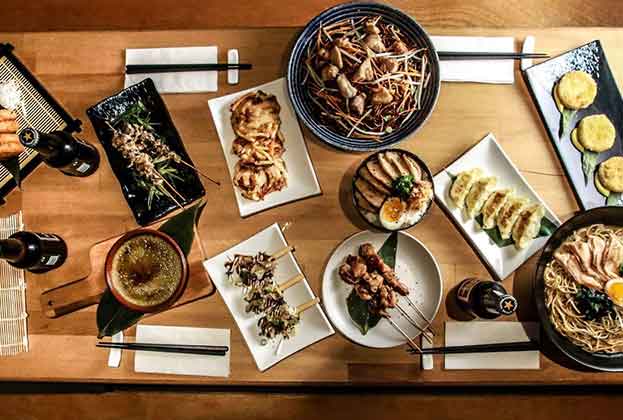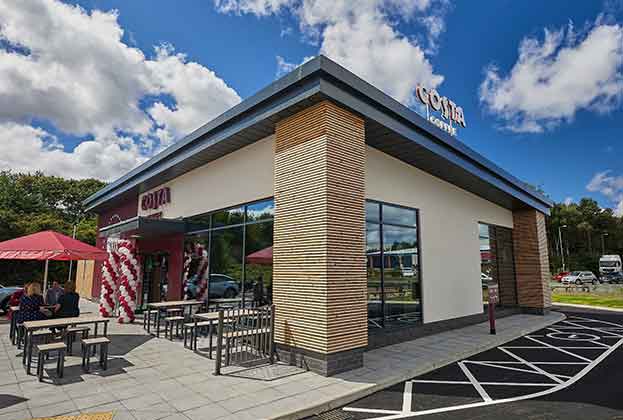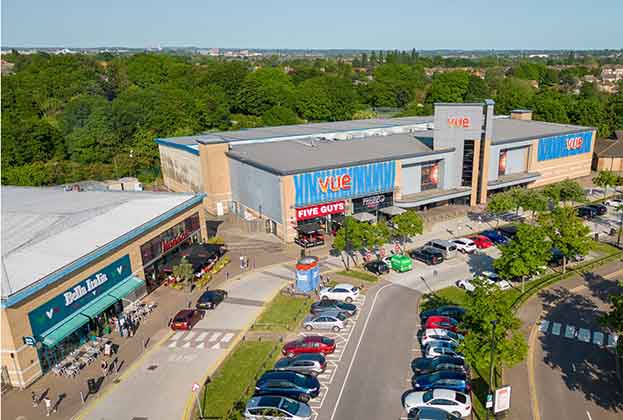Competitive socialising has firmly established itself as a stalwart of the leisure market, whilst immersive leisure is the fastest-growing subsector in the UK’s major city centres
The competitive socialising (CS) sector has grown at unparalleled levels over the past five years. Renewed appetite for in-person experiences and interactions post-pandemic has fuelled demand for the sector, continuing the growth we first reported five years ago, but with key changes in the direction of this growth. The CS concept has been a constant leisure pick for us for a number of years, seeing a 40% increase in supply since 2018. This is set to continue, with new concepts on the horizon and an ever-increasing focus on quality of offer.
CS encompasses a mix of experiential leisure activities, such as urban mini golf, stop the clock (which includes breakout rooms), bowling and virtual reality (VR). There are also ‘solo’ operators that focus on a single sport concept and ‘combo’ brands that have multiple CS concepts under one roof. The market was in its relative infancy in 2018, and whilst the market has grown since then as a whole, some subsectors have accelerated at a faster pace than others. Auditing this growth is challenging, given its fragmented nature and almost constant new entrants. Our focus has been on locations where the leisure offer is a key differentiator of the business rather than an add-on (e.g. a bar with beer pong is not included).
Several operators have established themselves as blended ‘combo’ brands, with a more varied entertainment experience proving popular with consumers and extending dwell times. The likes of Boom Battle Bar, Lane7 and Roxy have contributed to the 455% increase in ‘combo’ attractions over the past five years, whereas cinema operator The Light has adapted its most recent developments to incorporate a broader leisure offering. ‘Solo’ competitive socialising, which defines venues marketing one singular activity such as darts, axe-throwing and ping-pong, has grown by 162%. Urban mini golf, a more established sector, but one which has been revolutionised through innovative design and imaginatively themed layouts, has also seen an increase of 96%.
By comparison, bowling, whose presence in the market spans decades, has increased by 10% largely due to its growth within combo markets, and Stop The Clock by 13%. Brands with the most investment, or IPO relationships, tend to be the most resilient or expansive. Standalone VR is the only sector to have declined (-5%); however, unlike its peers, it is now more likely to be incorporated into blended rather than standalone concepts and remains an important growth area for new entrants. In each case, the more successful operators are utilising the draw of a bar, with F&B sales providing a significant proportion of revenue.
As with much of the wider retail and leisure markets, the last five years have seen a significant flight to quality. Many of the original pioneers of the sector, particularly independents with little financial backing, failed to survive through the Covid years. Those small businesses that worked hard at their quality of offer and targeting PE funding have expanded having created more established covenant and confidence with landlords. The high setup costs often require landlord contributions, but land longer than average lettings.
.jpg)
Bunkers Romford
CS encompasses a mix of experiential leisure activities, such as urban mini golf, stop the clock (which includes breakout rooms), bowling and virtual reality (VR). There are also ‘solo’ operators that focus on a single sport concept and ‘combo’ brands that have multiple CS concepts under one roof. The market was in its relative infancy in 2018, and whilst the market has grown since then as a whole, some subsectors have accelerated at a faster pace than others. Auditing this growth is challenging, given its fragmented nature and almost constant new entrants. Our focus has been on locations where the leisure offer is a key differentiator of the business rather than an add-on (e.g. a bar with beer pong is not included).
Several operators have established themselves as blended ‘combo’ brands, with a more varied entertainment experience proving popular with consumers and extending dwell times. The likes of Boom Battle Bar, Lane7 and Roxy have contributed to the 455% increase in ‘combo’ attractions over the past five years, whereas cinema operator The Light has adapted its most recent developments to incorporate a broader leisure offering. ‘Solo’ competitive socialising, which defines venues marketing one singular activity such as darts, axe-throwing and ping-pong, has grown by 162%. Urban mini golf, a more established sector, but one which has been revolutionised through innovative design and imaginatively themed layouts, has also seen an increase of 96%.
By comparison, bowling, whose presence in the market spans decades, has increased by 10% largely due to its growth within combo markets, and Stop The Clock by 13%. Brands with the most investment, or IPO relationships, tend to be the most resilient or expansive. Standalone VR is the only sector to have declined (-5%); however, unlike its peers, it is now more likely to be incorporated into blended rather than standalone concepts and remains an important growth area for new entrants. In each case, the more successful operators are utilising the draw of a bar, with F&B sales providing a significant proportion of revenue.
As with much of the wider retail and leisure markets, the last five years have seen a significant flight to quality. Many of the original pioneers of the sector, particularly independents with little financial backing, failed to survive through the Covid years. Those small businesses that worked hard at their quality of offer and targeting PE funding have expanded having created more established covenant and confidence with landlords. The high setup costs often require landlord contributions, but land longer than average lettings.
The key to future-proofing this sector is either bringing multiple concepts together under one roof as a cluster of brands or via a ‘combo’ style operator, or having a clear brand identity backed up with a high-quality offer or IPO
Tom Whittington, Director, Commercial Research
While greater London is the biggest market, on a per capita basis, the largest regional cities have a more significant supply and experience more growth. Manchester remains the second largest market, but Birmingham has seen the fastest growth in CS over the past five years, with the city seeing a net influx of 14 operators – a 74% uptick in site openings and with more planned for the Bullring & Grand Central estates in 2024. Liverpool has seen a net increase of nine new operators, with five brands alone in Liverpool One shopping centre, including Junkyard Golf, Gravity Max, Escape Live, Roxy Ballroom and Esports venue, Level Tap, with Flight Club set to join the lineup in 2024. London has seen a smaller proportionate rise in openings at 6%, which is largely due to a lack of affordable opportunities with the right footprint rather than saturation.
The key to future-proofing this sector is either bringing multiple concepts together under one roof as a cluster of brands or via a ‘combo’ style operator, or having a clear brand identity backed up with a high-quality offer or IPO. We’ve already seen several underinvested pioneers in the sector disappear, but otherwise, the growth in competitive socialising has been remarkable despite a dampened consumer backdrop, and shows that there remains a strong appetite for good leisure experiences. As such, we will continue to see further growth and new market entrants in the years to come.
Immersive leisure is the fastest-growing subsector in the UK’s major city centres
The leisure market is rarely described now without the term ‘experiential’, but a key difference is how a visitor can genuinely feel transformed into another world. A parallel leisure subsector to competitive socialising is taking hold around interactive and immersive experiences, with operators particularly favouring major city centres across the UK where domestic and international visitors have returned.
What once was a sector in its infancy has grown exponentially over the last three years. Whilst it remains difficult to clearly define the parameters of the ‘immersive’ leisure sector given the variety of concepts categorised under this banner, there are distinct themes, each of which works to satisfy all senses. Much of this revolves around the arts (theatre, music etc), digitisation or bringing known TV, Film and Entertainment IP (intellectual property) to life. The likes of ABBA Voyage, The War of The Worlds, BBC Earth and Monopoly Lifesized show the importance of a strong IP in appealing to consumers.
The immersive sector is no longer new and untested, it has evolved, and with it has the property market
Jessica Hill, Graduate Surveyor, Central London Retail
How much of this becomes a relatively short-term fixture remains to be seen, but the cost of a good fit-out and the increasing inward investment certainly resonates with a more permanent offer. We have witnessed national and international expansion encouraged by a 375% increase in funding in this subsector (365 Finance) while continuing to be polarised by short-term activations (typically three to six months) and longer-term five-year-plus leases. Shorter-term live requirements include Fever (partnering with Netflix for Money Heist and Stranger Things), as well as Immersive Everywhere (with brand tie-ups such as Doctor Who and Peaky Blinders).
Permanent site openings have so far been skewed to London, including Frameless at Marble Arch (soon to be joined on the Portman Estate by Moco Museum), Monopoly Live (Tottenham Court Road) and The Paddington Experience (County Hall later in 2024). Further requirements in the market include Spyscape, The Lost Estate (actively seeking a permanent home to follow its meanwhile West Kensington location) and Secret Cinema, following its buyout from TodayTix. Museum of Illusions has 40 global locations, but a significant pipeline, including London, Birmingham, and Manchester, showing that major regional cities are also on the radar for expansion.
The immersive sector is no longer new and untested, it has evolved, and with it has the property market. The challenge to growth is limited by suitable store units. Given the influx of acquiring operators, occupier demand continues to outweigh supply and resultingly, prime locations are gathering good competitive tension and driving up rents (£50 psf+). Operators are typically looking for 20,000–40,000 sq ft, open-plan spaces and 4m+ head height for ‘showstopper’ installations. Incentives remain a key negotiation point, particularly as operators continue to structure their growth via SPVs; however, increasingly they have sufficient trading history to demonstrate a proven concept, steady income and improved covenant.
Counter to the positive growth story, there has been some waning excitement from landlords who have followed the immersive market for some time, and who, given the sheer number of requirements, have found it hard to identify those who truly have the necessary funding, longevity of concept and property knowledge to successfully transact a deal. Differentiation is a necessity in this crowded market. Technological advancement and strong IPs will help operators build an identifiable brand and protect themselves against copycats and competition, but with limited supply in the regions, growth continues to remain inevitable if good sites can be acquired.
Read the articles within Spotlight: UK Leisure – 2024 below.
.jpg)




